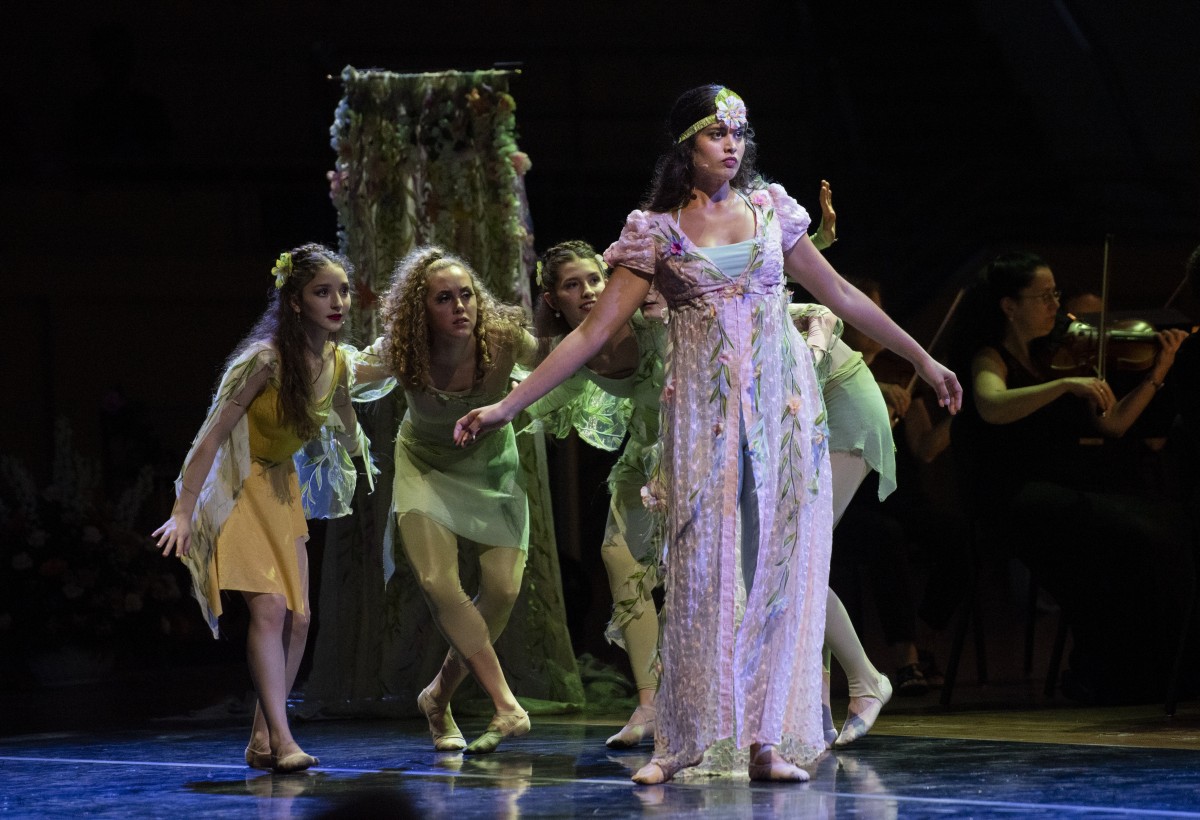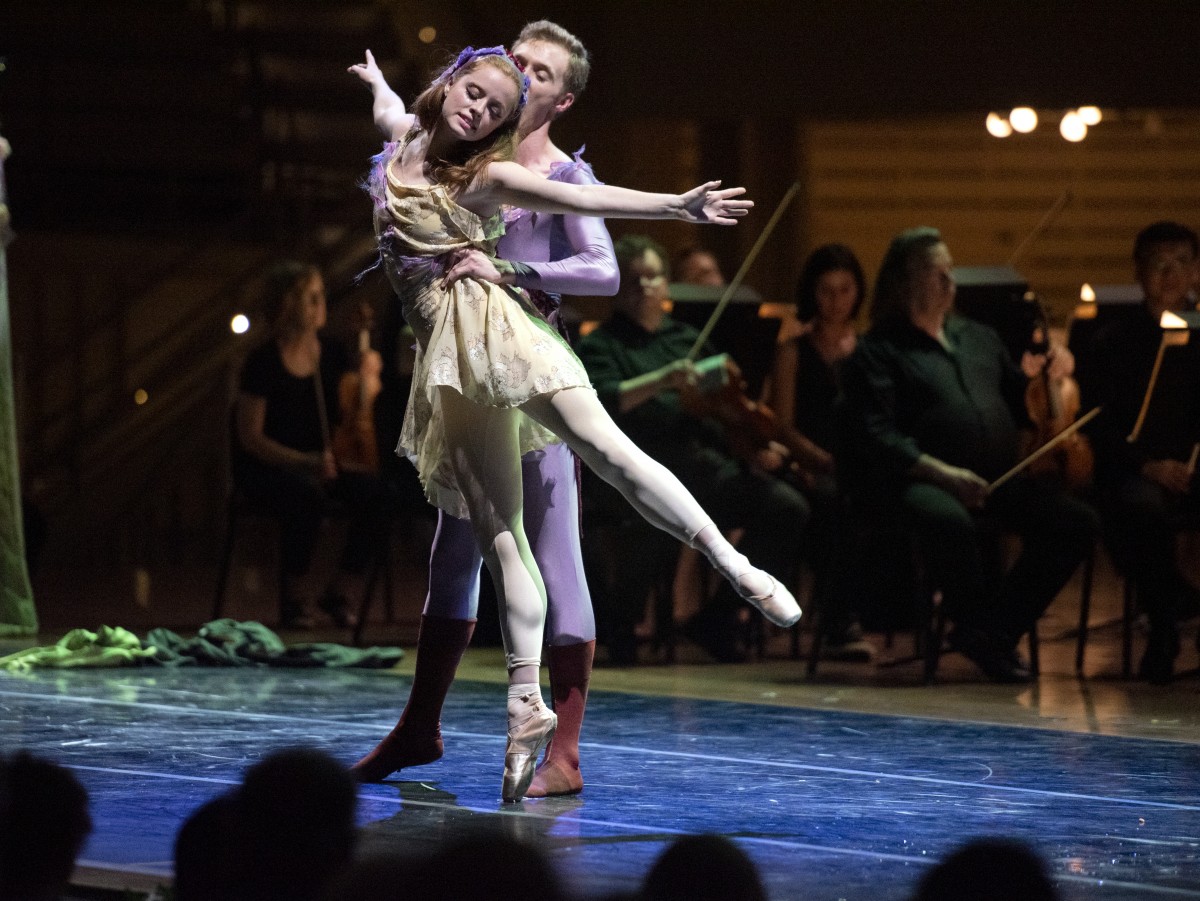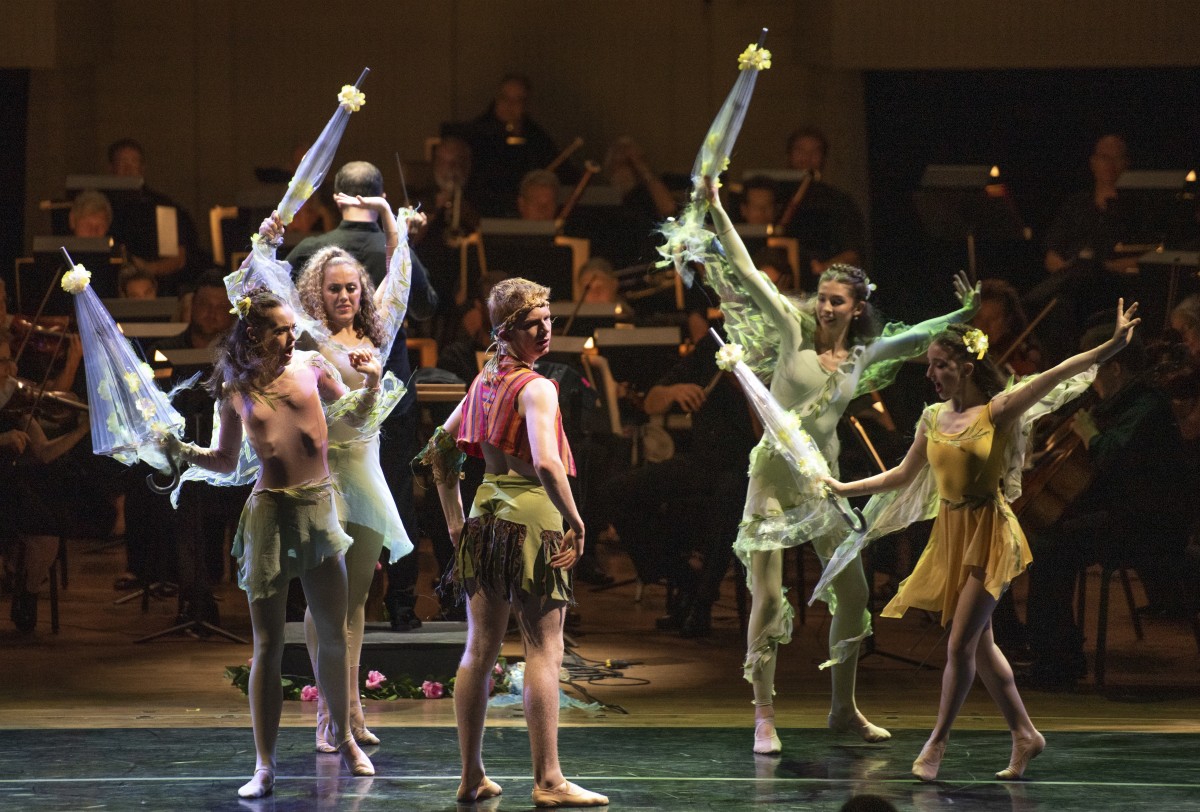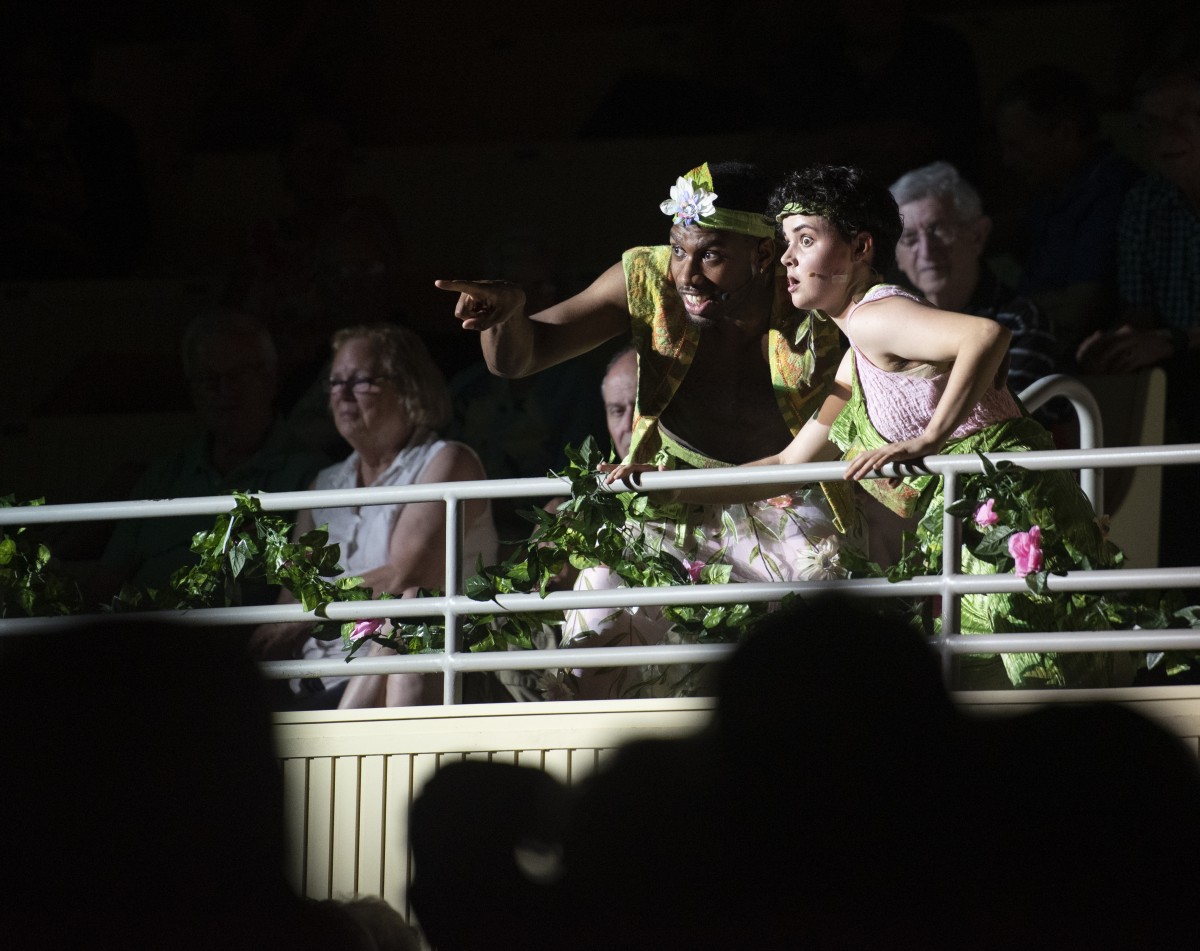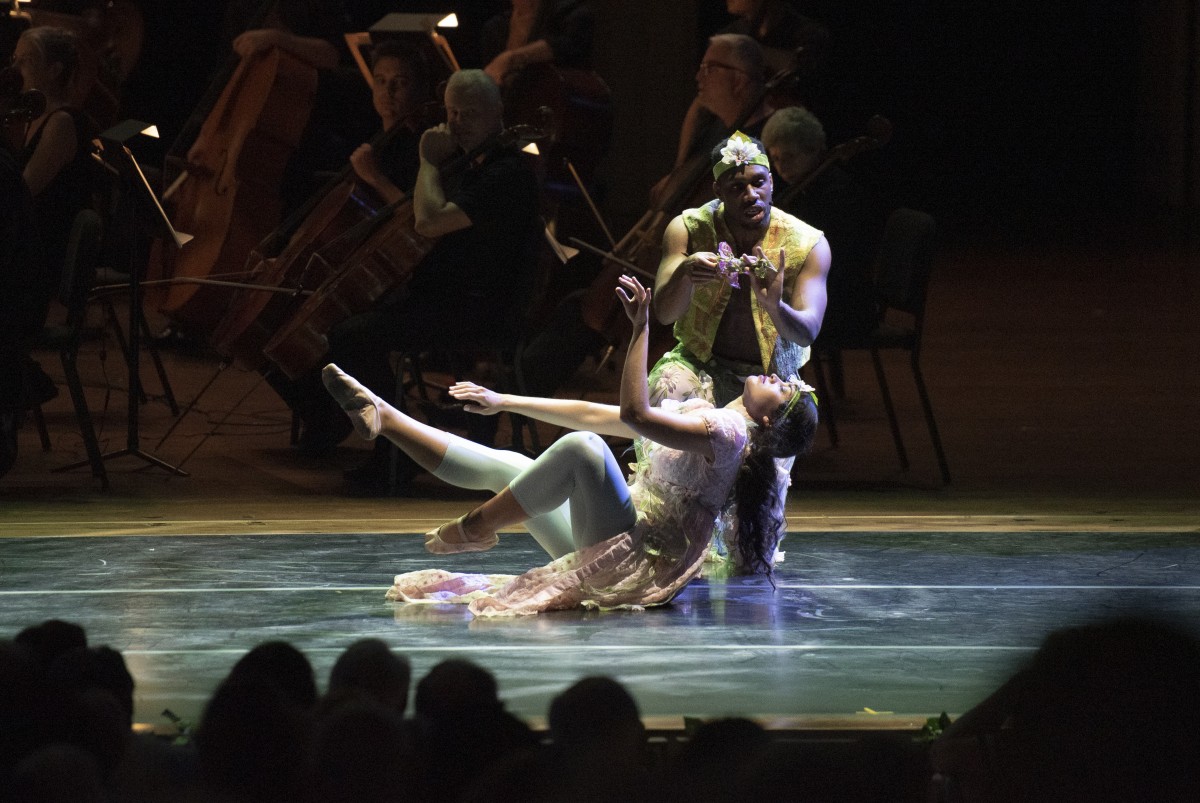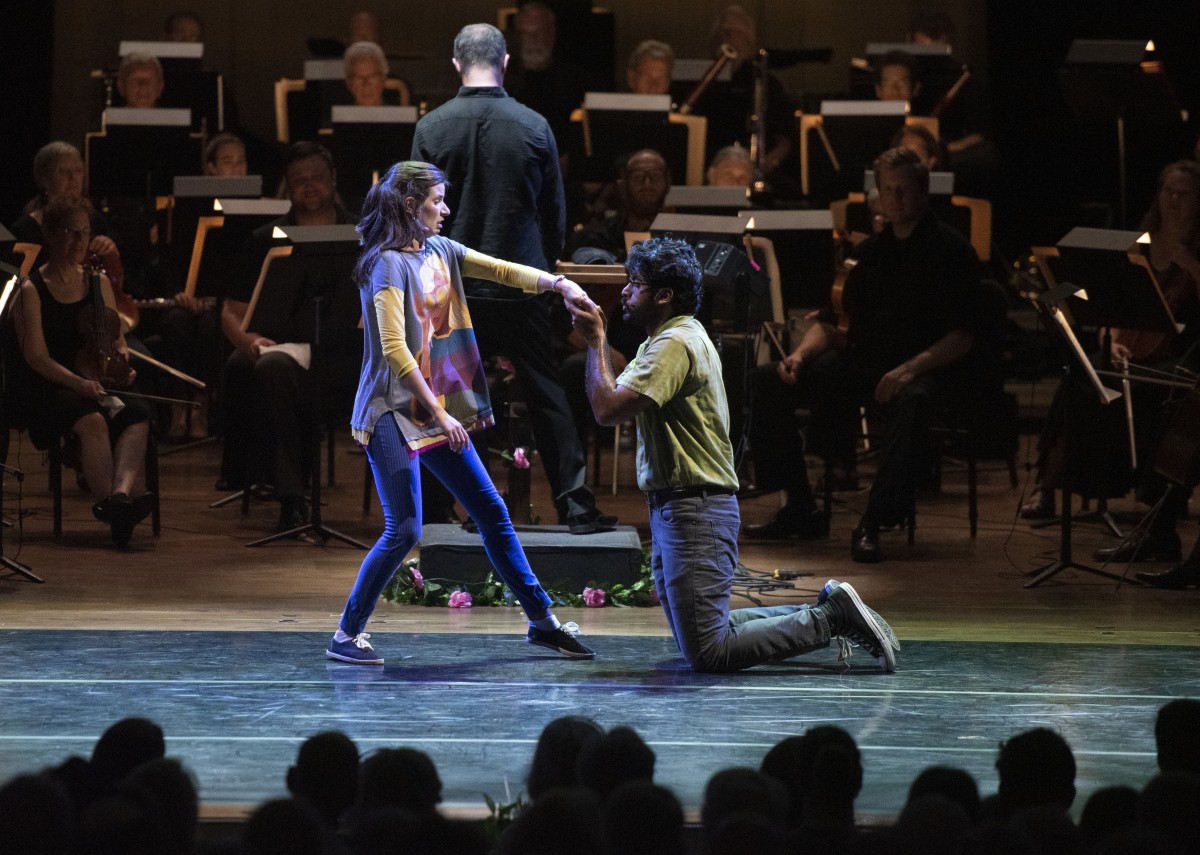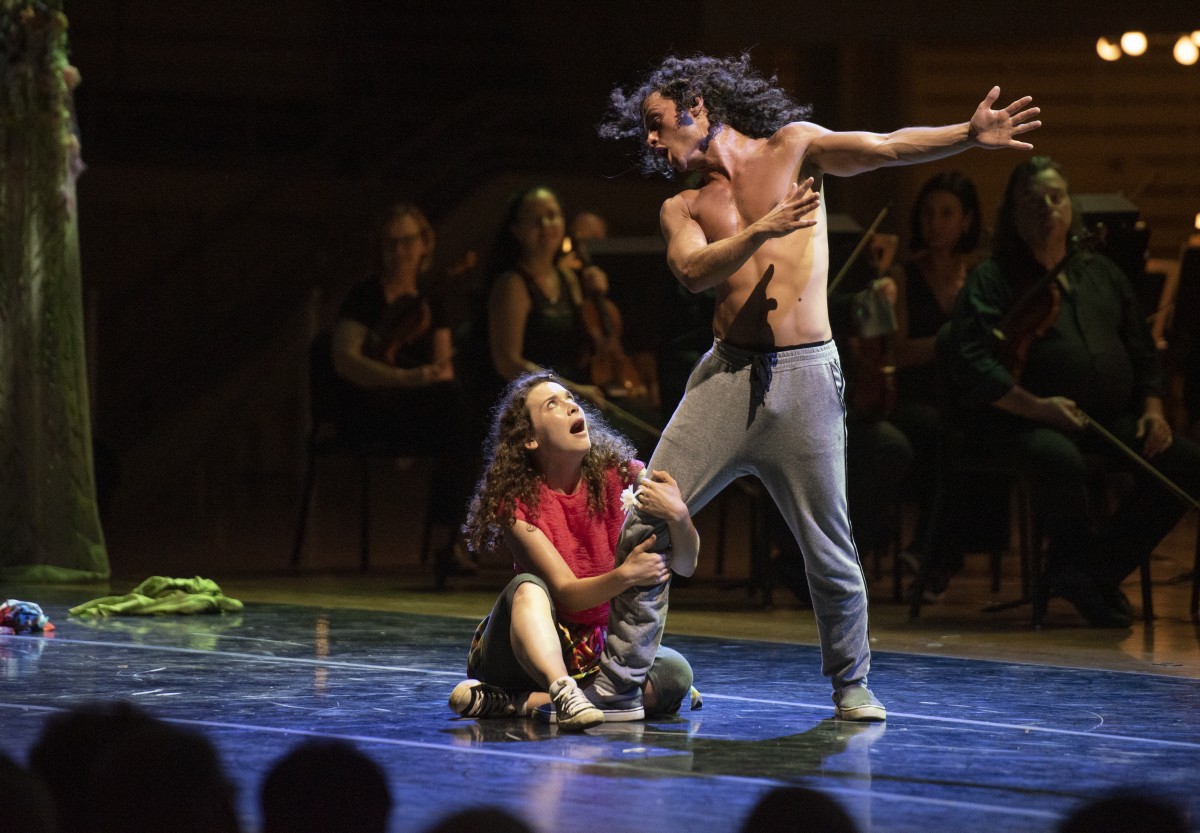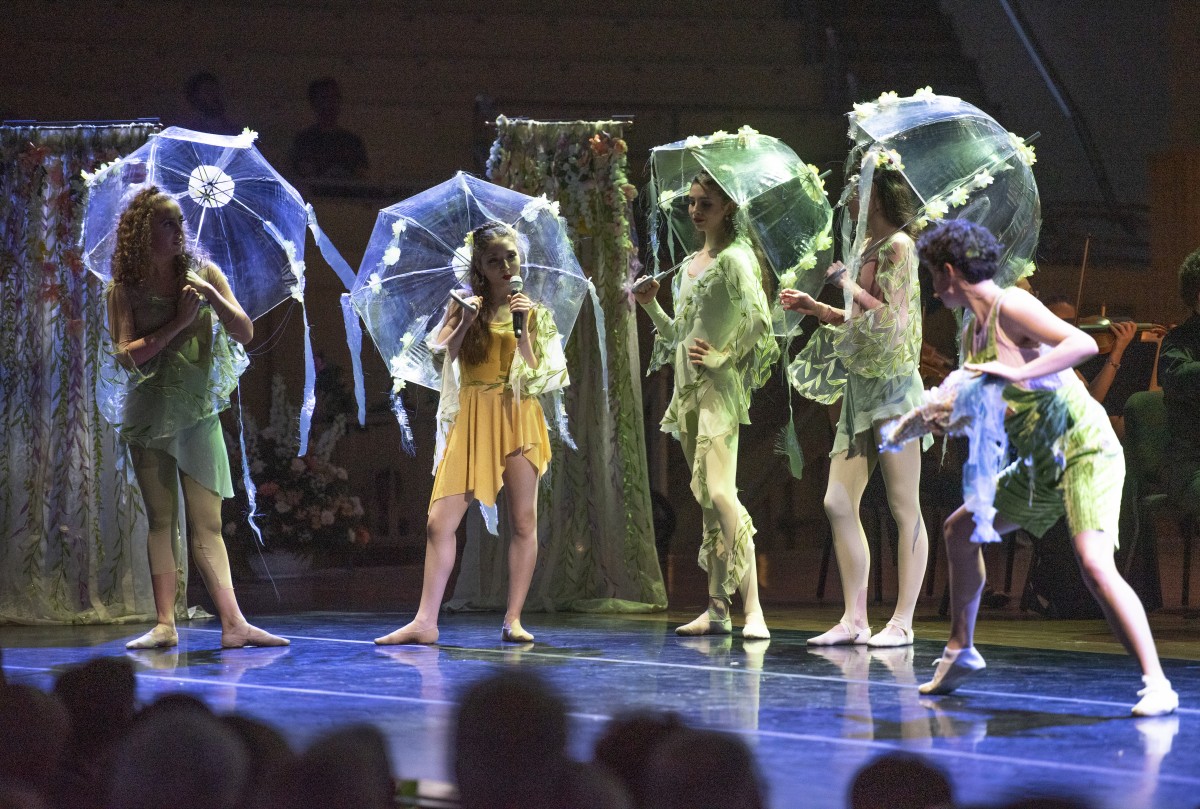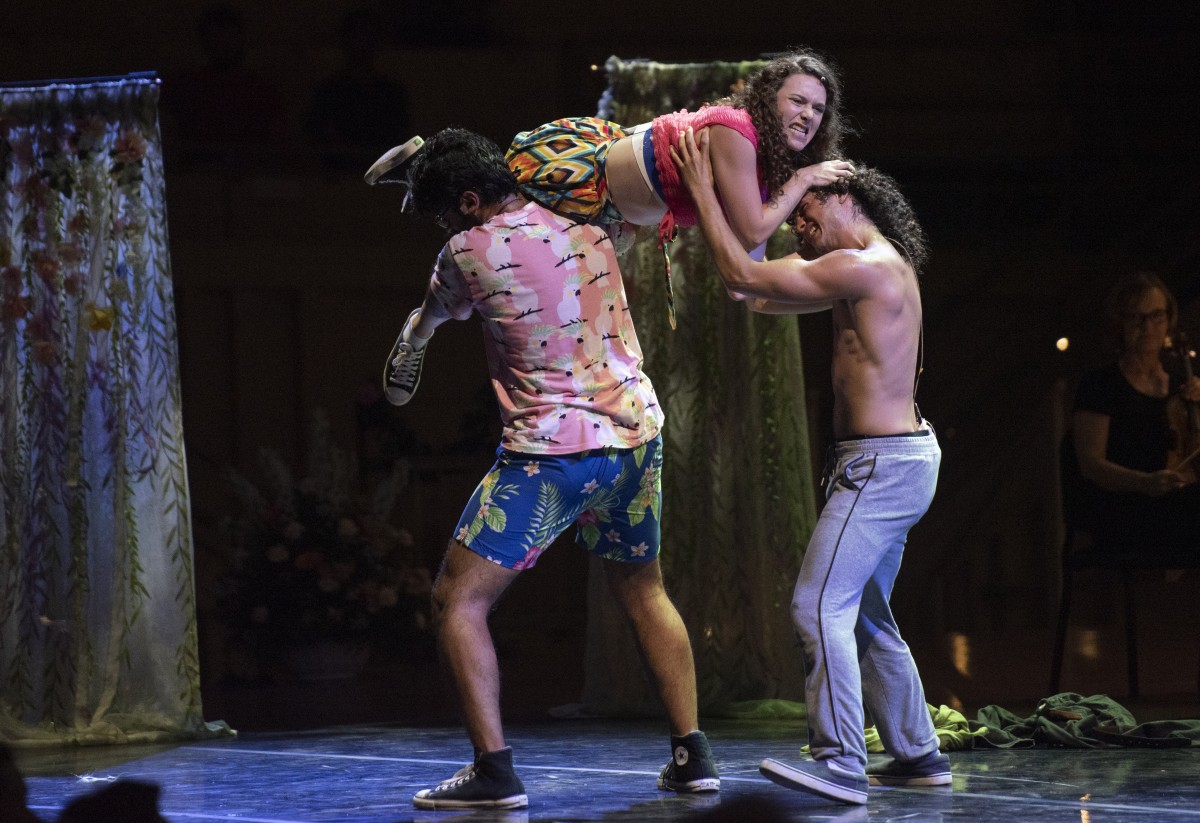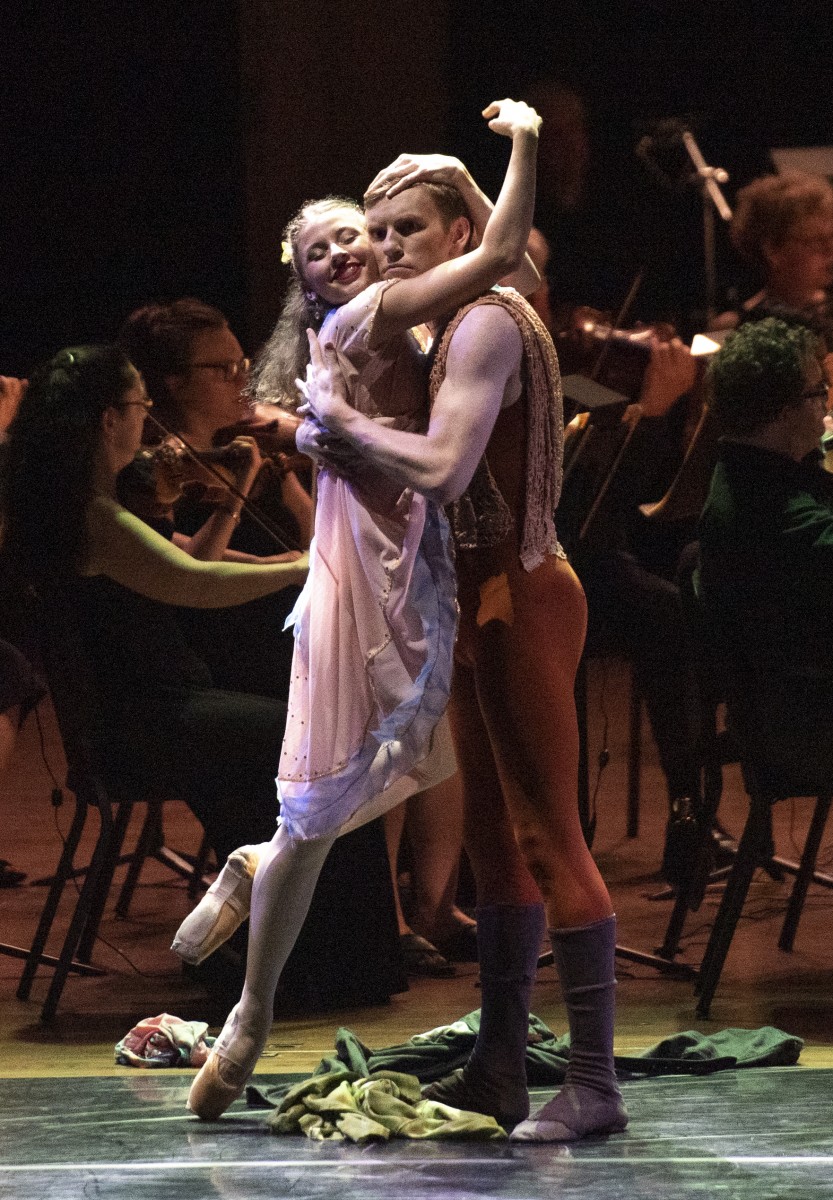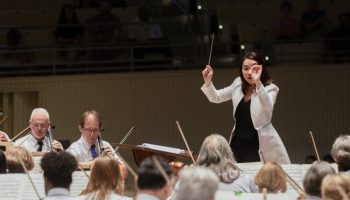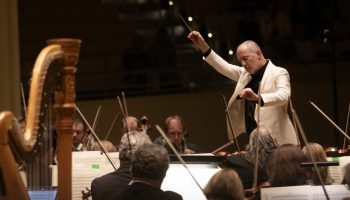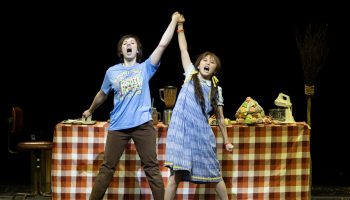Review by Andrew Druckenbrod:
Puck’s famous epilogue at the end of Shakespeare’s comedy A Midsummer Night’s Dream apologizing if the play offended the audience is, of course, tongue-in-cheek. But after a sometimes goofy, often elegant but all-together pleasing multidiscipline production of Mendelssohn’s celebrated setting in the Amphitheater Tuesday night, it almost itself offended. After all, the audience witnessed — sometimes quite close-up — a frenetic and funny take on the classic by student performers that needed no apology.
With most of the performances in the Amp from artists in their prime (or at least well-known), here were performers of the future from Chautauqua Theater Company, School of Music Voice Program and School of Dance. The Chautauqua Symphony Orchestra under Rossen Milanov formed a bedrock upon which the students could flourish, but they hit marks, often doubly so. The smart solution by co-directors Andrew Borba and Sarah Elizabeth Wansley to get all the young performers involved was to pair dancers and actors in many roles.
This strategy meant Puck stole the show twice as much as usual. Actress Kayla Kearney shared the role with ballerino Jack Grohmann. She channeled Mary Martin’s Peter Pan while he emphasized Puck’s impish side. Likewise, with mischievousness of their own, the dancers mirrored the actions of the actors, the lovers Demetrius, Helena, Lysander and Hermia. This clever mix of classic ballet technique and whimsical choreography shined in the scene when Puck sends the lovers into deep sleep.
Borne with, shall we say, a puckish modern translation by Avenue Q librettist Jeff Whitty, the young actors embodied the high school drama of the magically misdirected Athenian lovers, anchored by an appropriately self-assured Oberon. Sharp performances by all, but alas names were not attached to characters in the program. At one point, the frustration of the confused Athenians leads to a mad dash of singers and dancers throughout the audience. With the barest of sets, Dixon Reynolds’ costumes stepped in with eclectic and eccentric designs, from modern suits to matching T-shirts. I particularly liked the contrast between Lysander’s Chippendale look and Demetrius’ frumpy dad outfit, and Kearney’s bright green overall shorts were a deft touch.
My own apologia for not getting to the musical performances sooner. The singers from the Voice Program impressed, especially when joined together in the chorus, “You spotted snakes with double tongue.” With the focus on the development of the voice, by its nature an individual matter, blending by opera singers is not assured. It was nice to know the teachers here work on that, as well. That is not to say the soloists disappointed. To the contrary, they phrased well, displaying voices already rich but well on their way to fulfilling the potential that comes later to opera singers.
The CSO played gracefully, with lightness and precision in the elven music and with warmth and bloom in the full sections that followed. This is hardly difficult music for a professional orchestra, but Milanov crafted phrases with aplomb and the balance was excellent in the overture and incidental music alike.
VBO: ‘Music set ablaze’
A special secret about Chautauqua Institution is the chamber music performances that dot each week, usually during the day. Monday brought the smaller, but potent Venice Baroque Orchestra to Elizabeth S. Lenna Hall in a fiery performance that belied the undeserved notion that baroque music is background or church music.
The 15 string, harpsichord and lute players threw the gauntlet down at the onset with dynamic, well, dynamics as a diminuendo arrived so shockingly quick in the very first phrase. That was in a sinfonia from Vivaldi’s opera, L’Olimpiade, that ended with the 18th-century version of thrashing rock. A glorious treatment of the delicate opening to George Frideric Handel’s G-major concerto grosso, from his opus 6 set, progressed to clear soli phrasing and crisp tutti articulation.
Things got more wonderfully intense as the concert progressed, from bow strokes both bouncing and biting to furious, theatrical playing. A Vivaldi violin concerto in E minor brought the virtuosity of concertmaster Gianpiero Zanocco to the fore, and he led the charge in an electric and downright rowdy performance of Francesco Geminiani’s “La Follia.” Vivaldi’s C-major recorder concerto had violinist Anna Fusek pick up a soprano recorder for a lively end to the concert. Yes, there were many moments of exquisite — and quiet — music, but the overall impression was that of music set ablaze.
Andrew Druckenbrod is a lecturer in the Department of Music at the University of Pittsburgh and former classical music critic of the Pittsburgh Post-Gazette.


